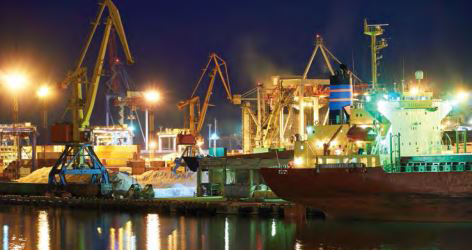Port performance enhancement – a requisite for growth

Port performance enhancement – a requisite for growth
Over the last few decades, the maritime industry has witnessed drastic increases in the size of dry bulk carriers due to the optimization of “economies of scale”. The dry bulk vessel growth has translated to impact the entire maritime transport ecosystem leading to, for instance, port and canal expansions. The volume of global seaborne trade was expected to grow at 3.8 percent between 2018-2023, with the dry bulk segment growing the fastest. In 2017, major dry bulk commodities accounted for approximately 30 percent of seaborne trade, an increase of 5.1 percent from 2016. Developing economies accounted for early 60 percent of the imports and exports.
In India, maritime trade accounts for 95 percent of the country’s total international trade volume. The quality and performance of India’s 212 ports (12 major ports administered by the Union Government and 200 non-major ports overlooked by the state government and union territories), located along the 7517-km coastline, largely impact the cost structure and in turn define India’s competitive advantage in comparison to other developing economies. Unfortunately, the low draft at Indian ports, with most comprising a draft of under 14m, except select few newer ports with drafts of more than 14m, does not meet international standards - a major constraint in traffic handling. The draft would need to be a minimum of 18m to handle Capesize vessels (170,000 DWT). The inadequate draft at Indian ports translates into additional time and lighterage costs as cargo often needs to be discharged at anchorage. Informatively, larger vessels are often given priority berthing at ports like Australia. Sourcing raw material from newer markets such as Russia and Colombia is challenging with drafts that can only handle Panamax.